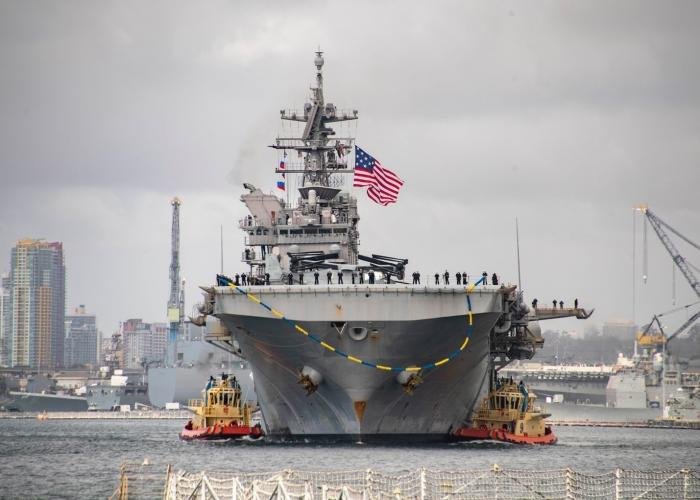The US Navy's second America-class amphibious assault ship, USS Tripoli (LHA-7), returned to Naval Base San Diego in California - the vessel's home port - with its complement of Lockheed Martin F-35B Lightning IIs on November 29, after completing its first operational deployment to the Indo-Pacific.
Commissioned in July 2020, the USS Tripoli is operated as part of the US Navy's Expeditionary Strike Group 3 (ESG-3), which has been active since 2007. This seven-month maiden deployment saw Tripoli visit the Navy's 3rd and 7th Fleet area of operations (AOs) in the Indo-Pacific region.
Embarked on the ship were 16 F-35B Lightning IIs assigned to USMC's Marine Fighter Attack Squadron 121 (VMFA-121) 'Green Knights', which took part in training exercises such as Valiant Shield 22 and Noble Fusion. The F-35Bs also joined the Philippine Armed Forces in taking part in the Philippine-led Exercise Kamandang 22. During the deployment, Tripoli also interacted with assets from Japan and Singapore.

In total, the USMC F-35B crews conducted 2,052 hours of flight operations and travelled 40,303 nautical miles during the exercises. As well as the aforementioned countries, Tripoli also visited Australia and Tasmania for scheduled port visits.
Upon returning to the vessel's homeport, Rear Adm James Kirk, commander of ESG 3, said: “I am proud of Tripoli for a successful first deployment. The ship and crew are on the leading edge, setting the example and testing the limits of the assault carrier. LHAs are designed to support the future of the Marine Corps Air Combat Element, and Tripoli has done just that. I am excited to see what else they can bring to the fight."

